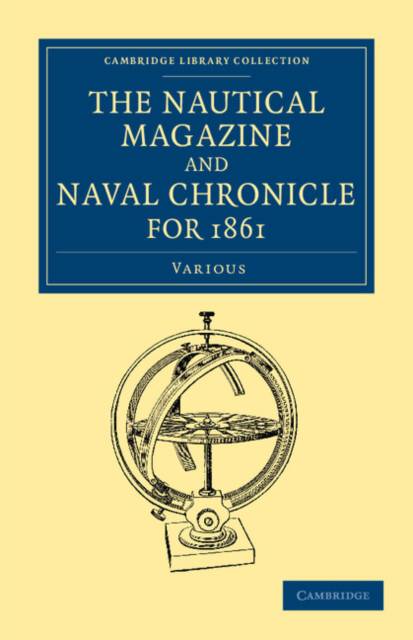
- Afhalen na 1 uur in een winkel met voorraad
- Gratis thuislevering in België vanaf € 30
- Ruim aanbod met 7 miljoen producten
- Afhalen na 1 uur in een winkel met voorraad
- Gratis thuislevering in België vanaf € 30
- Ruim aanbod met 7 miljoen producten
Omschrijving
The Nautical Magazine first appeared in 1832, and was published monthly well into the twenty-first century. It covers a wide range of subjects, including navigation, meteorology, technology and safety. An important resource for maritime historians, it also includes reports on military and scientific expeditions and on current affairs. The 1861 volume has a strong East Asian focus, and includes a description of the tragic destruction of Beijing's Summer Palace. Scientific articles cover the previous year's solar eclipse, an earthquake and tsunami, and recent advances in geology (ranging from the work of Sedgwick and Lyell, who also feature in the Cambridge Library Collection, to Murchison's research that enabled him to recognise gold-bearing rocks from Australia). An essay on the French navy (translated from the French) aims to shed light on a possible threat, and a list of naval promotions includes the magazine editor's appointment as Rear-Admiral of the Blue.
Specificaties
Betrokkenen
- Auteur(s):
- Uitgeverij:
Inhoud
- Aantal bladzijden:
- 726
- Taal:
- Engels
- Reeks:
Eigenschappen
- Productcode (EAN):
- 9781108054522
- Verschijningsdatum:
- 28/03/2013
- Uitvoering:
- Paperback
- Formaat:
- Trade paperback (VS)
- Afmetingen:
- 140 mm x 216 mm
- Gewicht:
- 907 g

Alleen bij Standaard Boekhandel
+ 251 punten op je klantenkaart van Standaard Boekhandel
Beoordelingen
We publiceren alleen reviews die voldoen aan de voorwaarden voor reviews. Bekijk onze voorwaarden voor reviews.









